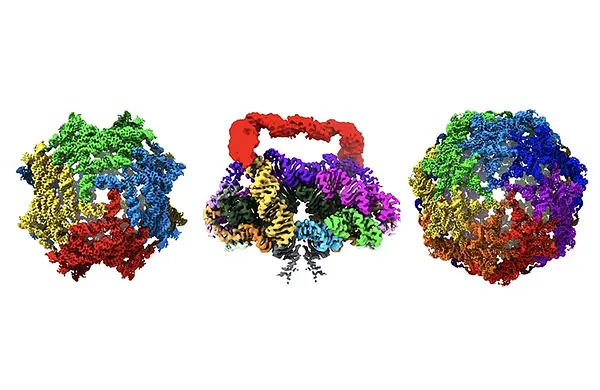
SLAC-Stanford Team Discovers Protein-Free RNA Megastructures
Category: General,
2025-05-10 19:40
Researchers from SLAC and Stanford have used cryogenic electron microscopy to reveal that three bacterial non-coding RNAs can independently form large, symmetric multistrand assemblies, without the help of proteins.
A collaborative team from SLAC National Accelerator Laboratory and Stanford University has made a significant discovery in the field of molecular biology. Using cryogenic electron microscopy (cryo-EM) at high resolutions ranging from 2.9 to 3.1 angstroms, the researchers observed that three types of bacterial non-coding RNAs are capable of folding into large, symmetric multistrand assemblies entirely on their own, without any protein assistance. Non-coding RNAs are RNA molecules that are not translated into proteins but play crucial roles in regulating gene expression and other cellular processes. Traditionally, the formation of complex RNA structures was thought to often require the presence of proteins to stabilize or guide the folding process. This new finding demonstrates that certain RNAs possess intrinsic structural capabilities, allowing them to assemble into elaborate architectures independently. The results, previewed in the journal Nature, provide new insights into the versatility and functional potential of RNA molecules. This could have implications for understanding RNA-based regulation in cells, the evolution of molecular machines, and the design of RNA nanostructures for biotechnology and medicine. The research highlights the power of cryo-EM in resolving detailed molecular structures and opens new avenues for studying RNA function and assembly in living organisms.
Source: R&D World
Importance: 75%
Interest: 85%
Credibility: 92%
Propaganda: 2%